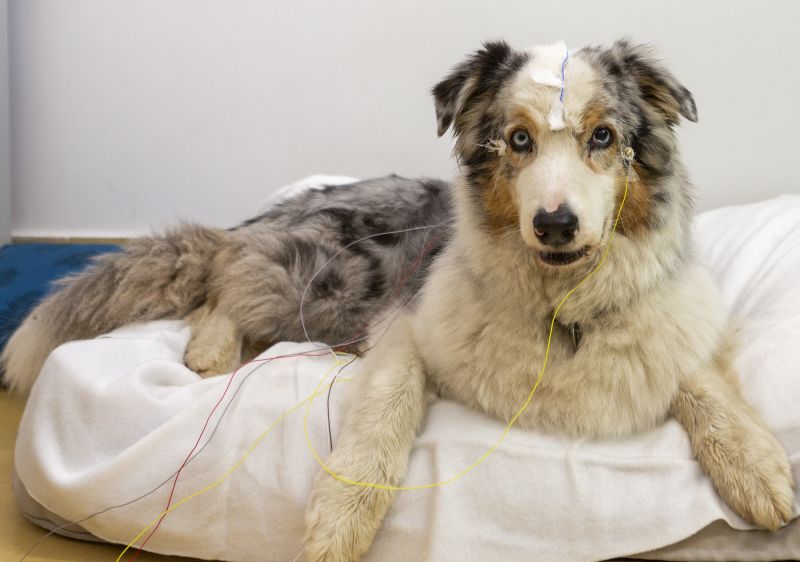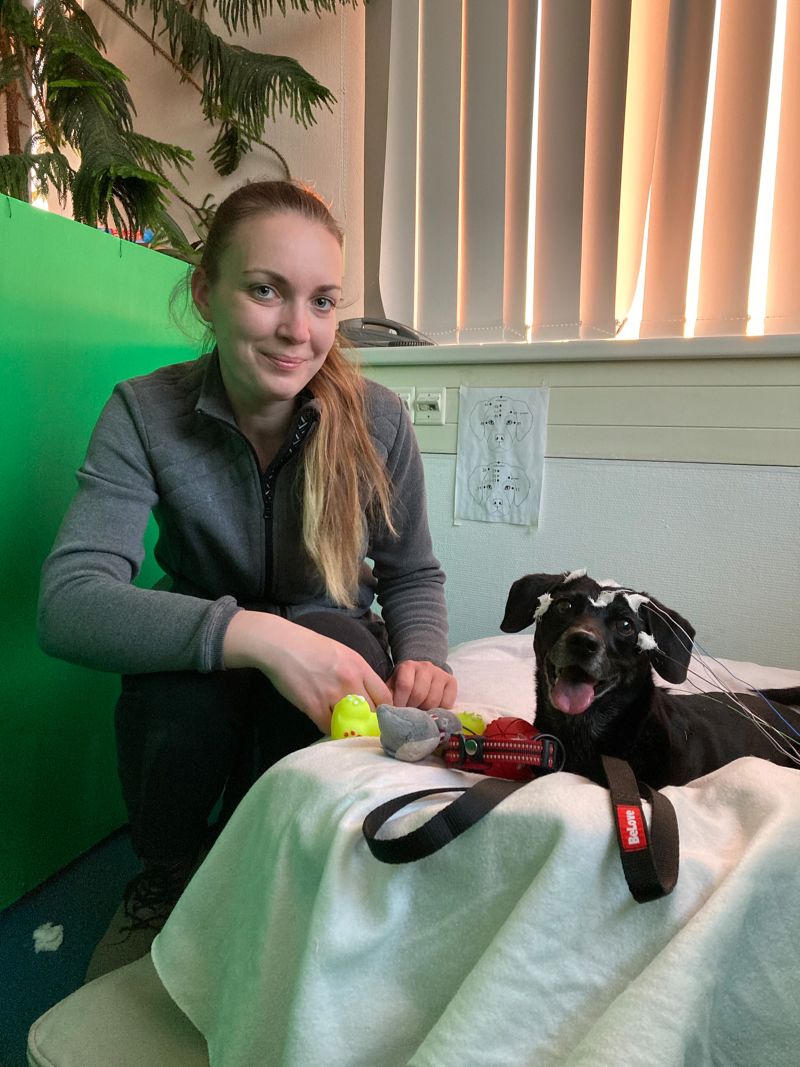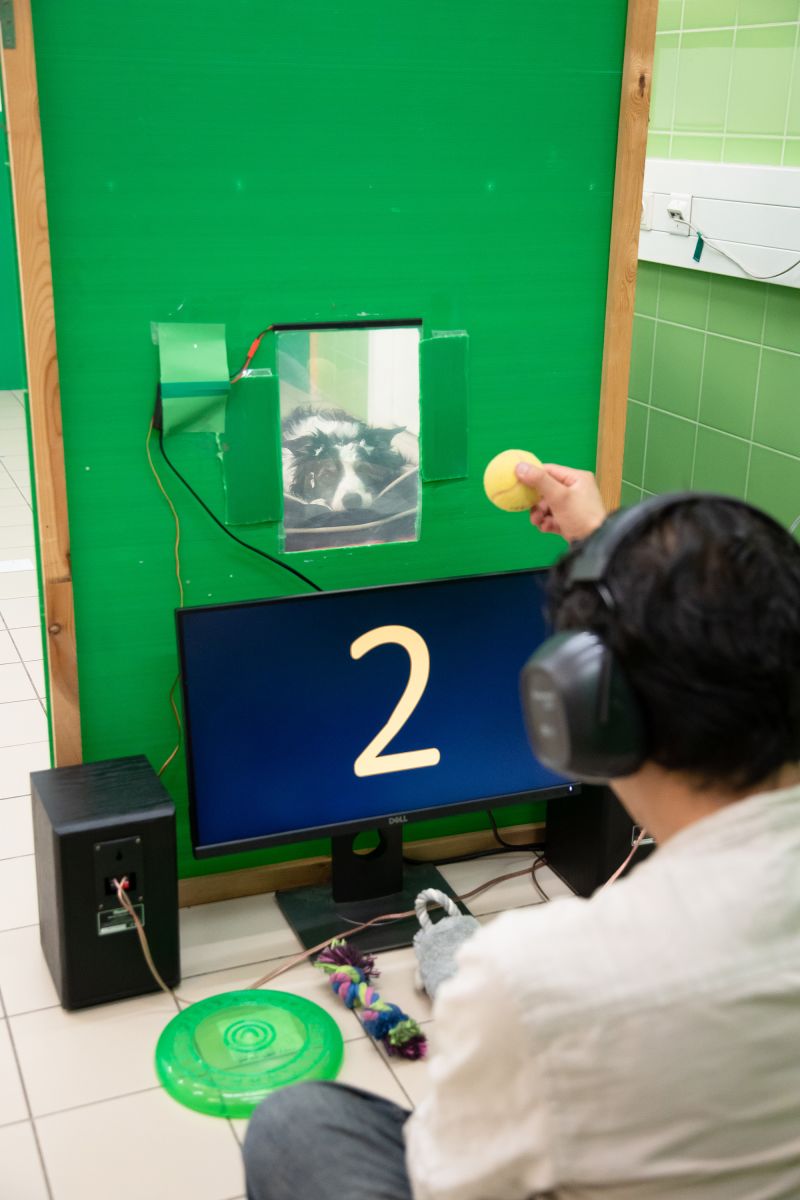
Dogs Show Ability to Associate Words with Objects, Study Indicates

Recent research indicates that dogs can make connections between words and specific objects, implying a human-like understanding of language.
According to a recent study, dogs can understand that certain words refer to specific objects. This suggests that they may understand words in a similar way to humans. Researchers said that this study offers the first evidence of brain activity for this comprehension in a non-human animal. However, the study's conclusion has faced scrutiny from other experts in the field.
It has been widely recognized that dogs can easily learn commands like "sit," "stay," or "fetch" and can demonstrate these learned behaviors in response to specific words, often motivated by treats. However, understanding their comprehension of nouns has posed a greater challenge.
To explore the language abilities of dogs, Lilla Magyari, an associate professor at Stavanger University in Norway and researcher at Eötvös Loránd University in Hungary, along with Marianna Boros, a postdoctoral researcher at Eötvös Loránd University, drew inspiration from studies on infants' language comprehension before they can speak. They decided to conduct similar experiments with dogs.
The study's lead authors conducted an experiment involving 18 dog owners who were asked to say words for objects their dogs were familiar with. The owners then showed either the corresponding object or a different one to their dogs, while small metal discs attached to the dogs' heads measured brain activity using electroencephalography (EEG).
Through this experiment, scientists observed that brain activity in 14 out of the 18 dogs was distinct when they were presented with an object that matched the spoken word, as opposed to one that did not. They noted that the resulting brain activity was similar to that seen in humans during comparable experiments.
Researchers measured the dogs' brain activity.
Researchers measured the dogs' brain activity.
Boros explained that when a dog understands a word, it means that in the absence of the object, the dog activates a mental representation. This mental representation can be thought of as the memory for that object.
In a study, researchers found that when owners showed dogs objects that did not match their mental representation, a typical brain response was observed in the dogs. This response is similar to what is widely accepted as an index of semantic understanding in humans.
The researchers argued that the two-second gap between owners saying the word of an object and showing it favored the interpretation that dogs actually understood the words, rather than just associating them with the object.
According to their owners, dogs responded more strongly to words they knew well when shown the wrong object, supporting the researchers' theory.
In past studies, dogs were asked to fetch certain objects to test their understanding of nouns, as stated by Eötvös Loránd University.
This method suggested that dogs only fetched the correct object at a rate expected by chance. However, Magyari pointed out that dogs can sometimes be unmotivated or distracted during studies.
Researchers were testing the dogs' understanding of nouns.
Researchers were testing the dogs' understanding of nouns.
Marianna Boros
Using EEG eliminated the need for a behavioral response, allowing researchers to explore the dogs' passive understanding. According to the researcher, this approach may uncover hidden insights that dogs are not able to demonstrate outwardly.
However, the full scope of the dogs' comprehension remains a mystery, even to the study's authors. This uncertainty arises from the fact that the dogs were reacting to familiar toys and objects brought by their owners to the lab.
Magyari mentioned that in this study, participants were anticipating their own objects when they heard certain words.
The level of understanding regarding the relationship between the word and the object remains unclear. It is unclear if participants also consider categorical knowledge, such as whether they believe the word "ball" refers to all ball-like objects, not just their own ball. Further research is needed to explore this aspect.
Clive Wynne, a professor at Arizona State University and director of the university’s Canine Science Collaboratory lab, shared with CNN that while the experiment was clever, it demonstrated that dogs were able to grasp a stimulus leading to an important consequence rather than the actual meaning of a word.
Owners held up objects to test their dogs' understanding.
Owners held up objects to test their dogs' understanding.
Oszkar Daniel Gati
He mentioned that in the experiment, a slight time delay was not a significant factor. According to him, a few seconds gap is acceptable in conditioning. He also pointed out that only familiar words would trigger a response, leading to a greater mismatch effect.
He explained that dogs do not possess the two essential brain areas needed for understanding human language. As a result, the EEG pattern observed by the researchers does not apply to humans.
"He mentioned that for us to assert that the brainwave pattern indicates an understanding of words, the pattern must be consistent,"
The findings were reported in the Current Biology journal on March 22.
Sign up for CNN’s Wonder Theory science newsletter. Explore the universe with news on fascinating discoveries, scientific advancements and more.
Editor's P/S:
The study's findings, while intriguing, highlight the complexity of animal cognition and the challenges in interpreting their behavior. It is important to consider the limitations of the study, such as the use of familiar objects and the potential for conditioning, as suggested by Clive Wynne. Further research is needed to fully understand the extent of dogs' language comprehension and to explore the underlying mechanisms involved.
One interesting aspect of this study is the use of EEG to measure brain activity in dogs. This approach provides a more direct measure of cognitive processes compared to behavioral observations, which can be influenced by various factors. However, it is important to note that EEG patterns can be complex and difficult to interpret, and more research is needed to establish the reliability and validity of this method in studying animal cognition. objects or categories, providing a clearer picture of their cognitive capabilities. By delving deeper into the intricacies of canine cognition, we may gain a better appreciation of the extraordinary bond between humans and their furry companions.









